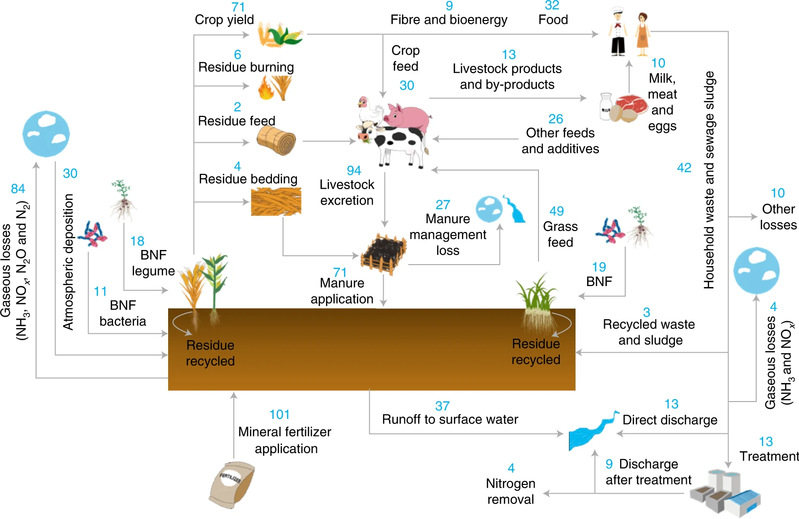《Nature Food》:CERS Researcher Decipher How Do Nitrogen Reduction Strategies Align with Food Security and Environmental Goals
2021-09-18
Nitrogen is essential to agricultural production. More than 100 million tons of nitrogen fertilizer are applied to crops every year to produce enough food to feed a growing population. However, when nitrogen input far exceeds plant uptake, it will inevitably lead to water pollution, resulting in algae blooms and loss of biodiversity and other ecological and environmental problems. In order to improve the health of human beings and ecosystems, some countries and regions have proposed or implemented measures to control nitrogen pollution. The trade-off between ensuring nitrogen supply for food security and environmental goals to reduce nitrogen use and loss remains an urgent issue in agriculture and ecology globally.
Recently, Professor Chang Jingfeng constructed a global agricultural nitrogen cycle framework based on the GLOBIOM (Global Biosphere Management Model), which explored the tradeoff between regional food security and environmental goals in the Global market, and determined the nitrogen boundary of different regions.The role of nitrogen related abatement strategies in coordinating regional food security and nitrogen pollution-related environmental goals was clarified.
Abstract:
While nitrogen inputs are crucial to agricultural production, excess nitrogen contributes to serious ecosystem damage and water pollution. Here, we investigate this trade-off using an integrated modelling framework. We quantify how different nitrogen mitigation options contribute to reconciling food security and compliance with regional nitrogen surplus boundaries. We find that even when respecting regional nitrogen surplus boundaries, hunger could be substantially alleviated with 590 million fewer people at risk of hunger from 2010 to 2050, if all nitrogen mitigation options were mobilized simultaneously. Our scenario experiments indicate that when introducing regional N targets, supply-side measures such as the nitrogen use efficiency improvement are more important than demand-side efforts for food security. International trade plays a key role in sustaining global food security under nitrogen boundary constraints if only a limited set of mitigation options is deployed. Policies that respect regional nitrogen surplus boundaries would yield a substantial reduction in non-CO2 GHG emissions of 2.3 GtCO2e yr−1 in 2050, which indicates a necessity for policy coordination.

